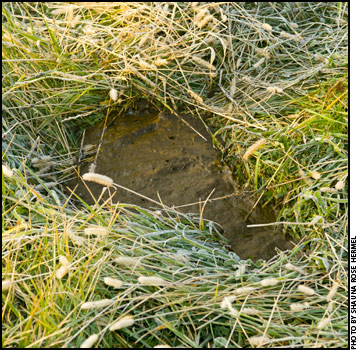
Manure Consistency
How does it stack up for your cattle?
Some animal nutritionists have devoted much time and effort to observation and evaluation of cow manure. This writer recently stumbled upon an old magazine story with an intriguing title: "Manure Connoisseur." The article explained how researchers used a system for scoring manure on the basis of its consistency. At one end of the numerical scale (1 through 5) was manure of a fluid nature, while the other extreme applied to manure that was fairly dry. Numbers 2 through 4 described the in-between stages in a progression from manure that's sure to splatter to that which is more stackable.
The take-home message of the story was that producers might learn something from cow manure. Its consistency offers clues to the adequacy of the cattle diet. Of course, sickness can influence the appearance of manure. If cattle are healthy, however, the consistency of their manure is largely determined by nutrition.
When producers attend grazing workshops held at the University of Missouri (MU) Forage Systems Research Center (FSRC), instructor and grazing specialist Mark Kennedy urges them to observe cattle manure as a means of monitoring forage quality. He shuns the numerical scores, though, favoring his own analogy.
"Cattle grazing high-quality forage typically produce manure whose consistency is somewhere between pancake batter and pumpkin pie filling," grins Kennedy, a state grassland conservationist for the U.S. Department of Agriculture's (USDA’s) Natural Resource Conservation Service (NRCS).
"If the manure is more like wedding cake (dry and stacked in layers), it contains more non-digestible fiber," Kennedy adds. "And that's a sign that the forage is of less-than-ideal quality."
Low-quality forages take longer for ruminant animals to digest. They remain in the digestive tract longer, and more moisture is removed prior to elimination of waste. Hence, the manure is drier. The slower passage rate of low-quality forages means total forage intake is reduced.
Kennedy suggests graziers monitor manure consistency, as an indicator of forage quality, to help fine-tune management-intensive grazing systems. Their goal is to develop systems that provide cattle with forage of the highest quality possible throughout the grazing season. However, keeping an eye on manure consistency can be useful to producers grazing cattle on stockpiled pasture or crop residues during the winter.
 Low-quality forages generally contain more non-digestible fiber, but they're also low in protein. Providing supplemental protein to ruminants actually "feeds" the rumen microbes necessary to the cow brute's ability to utilize forages. So, addressing dietary protein needs can improve rumen fermentation, increase the rate of passage and boost forage consumption. And manure typically becomes more "spreadable." Mineral imbalances can also affect manure consistency.
Low-quality forages generally contain more non-digestible fiber, but they're also low in protein. Providing supplemental protein to ruminants actually "feeds" the rumen microbes necessary to the cow brute's ability to utilize forages. So, addressing dietary protein needs can improve rumen fermentation, increase the rate of passage and boost forage consumption. And manure typically becomes more "spreadable." Mineral imbalances can also affect manure consistency.
Forage analysis is the best way to know what level of various nutrients forage resources can provide, so producers can offer cattle a balanced diet. But observing manure can warn producers when something might be amiss.
[Click here to go to the top of the page.]





